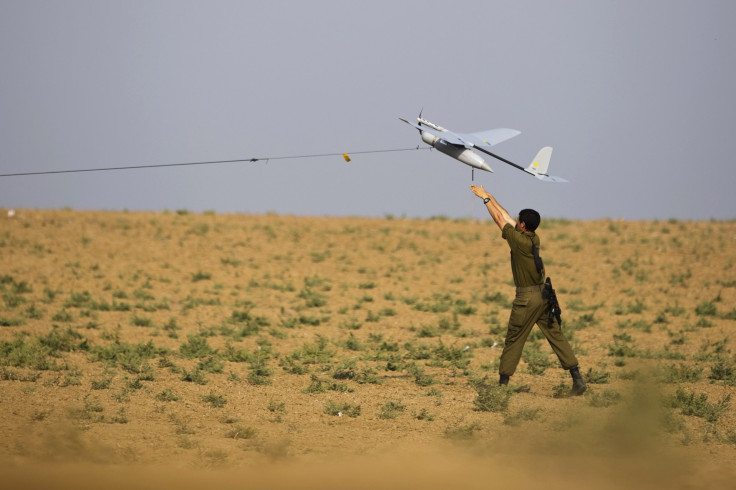Does ISIS Have Drones? Propaganda Footage Shows Aerial View Of Syrian Raqqa Army Base [VIDEO]

An ISIS-affiliated YouTube account has uploaded a video indicating the terrorist group is able to deploy remote-controlled drones to capture surveillance footage of the disputed regions of Iraq and Syria. When ISIS (an acronym for the Islamic State of Iraq and Syria) released a video of American journalist James Foley’s execution last week, it was seen as gruesome evidence the group, also referred to as ISIL and Islamic State, possesses advanced technological capabilities.
The video appeared to be professionally edited and of much higher-quality than earlier efforts. It also was disseminated with an aggressive social media strategy.
The radical Islamist group has now posted a video that features footage that seems to have been captured by an unmanned-aerial vehicle, or UAV, a technology that could be hugely advantageous for the group’s intelligence efforts.
At 14 minutes, the video in question first surfaced on an official ISIS Internet forum and depicts a number of disturbing images. Militants can be heard planning an attack in which a truck opens “the way so that a second suicide bomber can hit the headquarters,” a translation provided by Vocativ indicates. There are also images of ISIS members executing Syrian soldiers.
What’s remarkable about the video, though, is the aerial pictures of Syrian Army Military Base 93 in northern Syria near Raqqa province. ISIS ground forces attacked the base on Aug. 7, unleashing suicide bombers and driving truck bombs into the disputed area, CNN reported. A caption that runs across the video reads, “From the drone of the army of the Islamic State.”
U.S. military officials have yet to confirm ISIS has UAV capability, but there’s little doubt the insurgent group is able to afford it. Islamic State supporters control large swaths of Iraqi oil fields and are reportedly selling crude oil at less than half the global market rate while still reaping an estimated $1 million per day. While exact numbers are difficult to pin down, the problem has become so severe, Iraq’s Oil Ministry had no choice but to issue a warning last week to international buyers that any unauthorized purchases will likely fund terrorist activity.
“International purchases [of crude oil] and other market participants should be aware that any oil exports made without the authorization of the Ministry of Oil may contain crude oil originating from fields under the control of [ISIS],” the statement read. “The only seller of Iraqi crude oil authorized by the Ministry of Oil is [Iraq’s state-owned oil company] SOMO.”
The term “drone” often conjures images of armed American Predator drones capable of identifying and eliminating precise terrorist targets in the hills of Pakistan and Yemen. Only three countries -- the U.S., United Kingdom and Israel -- have deployed armed drones in combat while other countries, including Russia, China and Iran, are known to have armed drones although they’ve never been used at war.
Other groups like Hamas and the Libyan forces that removed Moammar Gadhafi also used drones, albeit only in a surveillance capacity. Israel has claimed it shot down a Hezbollah-operated drone earlier this year although every previous report on how terrorist groups operate drones has stressed that, unlike the Predator, these drones are simple, “quad copter” devices with a small camera attached.
“That terrorist and militant organizations have acquired and used drones during combat operations for surveillance purposes shows how rapidly this technology is proliferating,” national security analyst and author Peter Bergen wrote in a CNN editorial.
“One could imagine the creation of some kind of Geneva Convention that specifies as a matter of international law when the use of armed drones could be sanctioned outside of conventional war zones to kill terrorists. Such a convention would also help to prevent the sale or transfer of sophisticated drone technology to nonstate actors such as ISIS.”
© Copyright IBTimes 2024. All rights reserved.





















